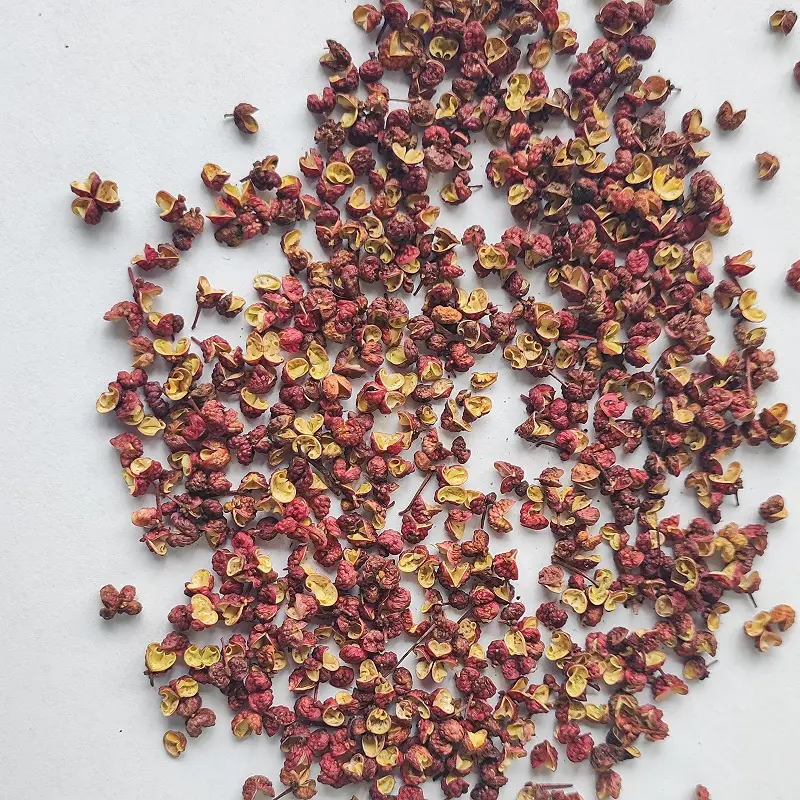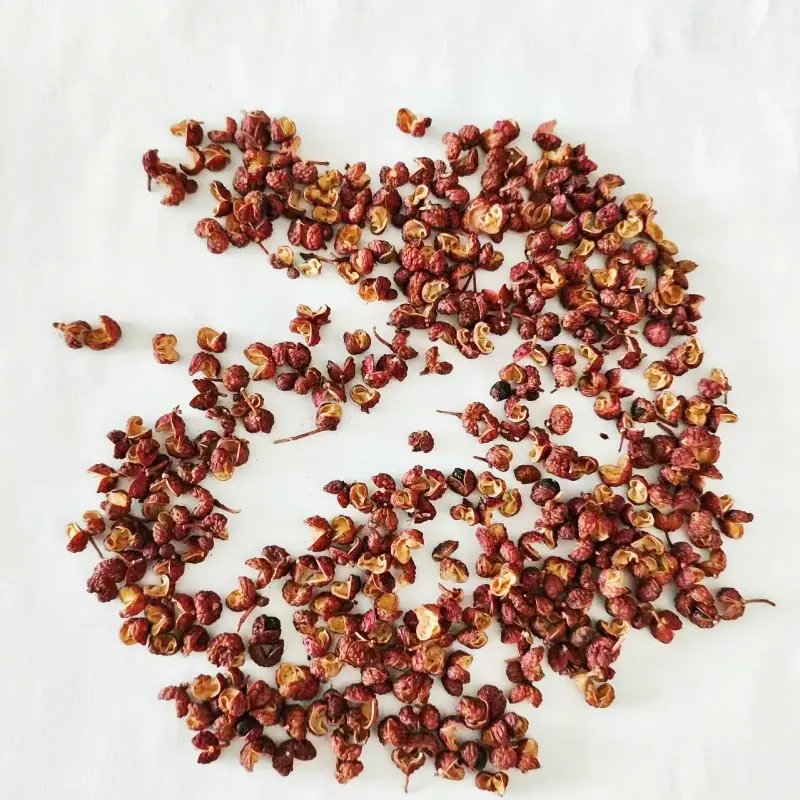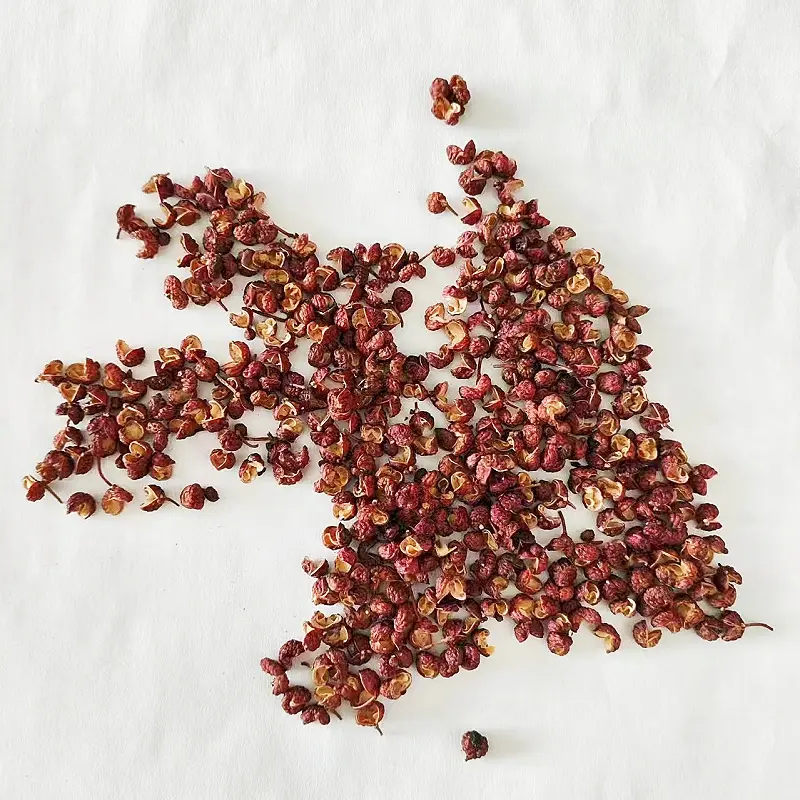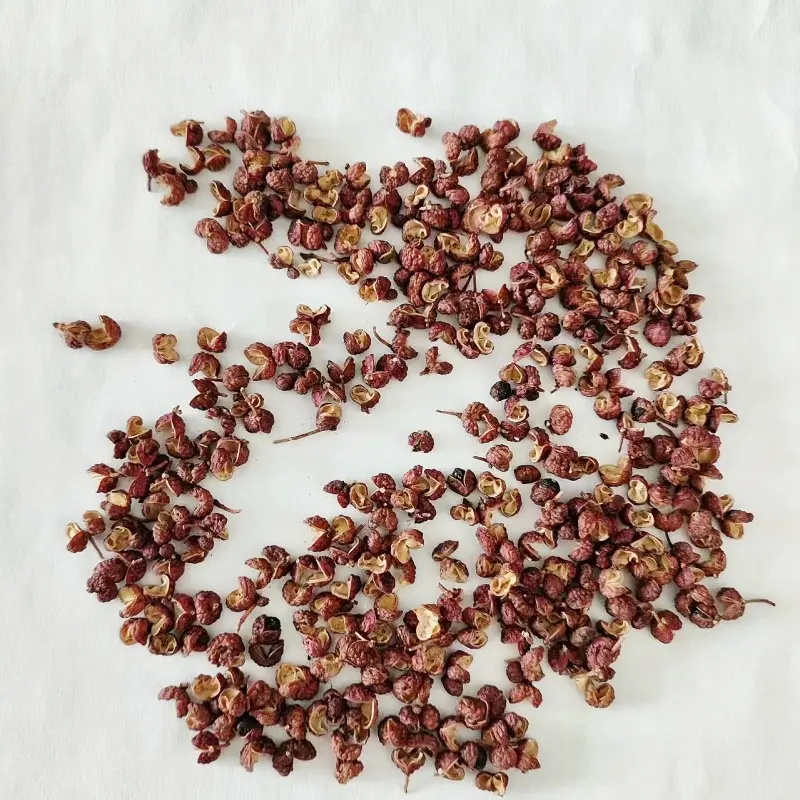What are Sichuan peppercorns?
Sichuan peppercorns. (scientific name: Zanthoxylum bungeanum Maxim.) is a small deciduous tree of Rutaceae and Zanthoxylum; the thorns on the stem up to 7 meters high often fall prematurely, the branches have short thorns, the leaves have small leaves, and the leaf axis is often very narrow Leaf wings; leaflets opposite, sessile, ovate, elliptic, sparsely lanceolate, larger at the top of the leaf axis, with finely fissured teeth on the leaf margin, and oil spots between the teeth. The rest have no or scattered oil spots visible to the naked eye, the midrib is slightly concave on the leaf surface, the inflorescence is terminal or at the top of the lateral branch, the inflorescence rachis and pedicels are densely pubescent or glabrous; the perianth segments are yellow-green, in shape and size Roughly the same; female flowers rarely have developed stamens, with carpels, styles obliquely dorsicurved. The fruit is purple-red, with a single stalk scattered with slightly raised oil spots, and the top has a very short awn tip or none; blooms in April-May, and bears fruit in August-September or October.
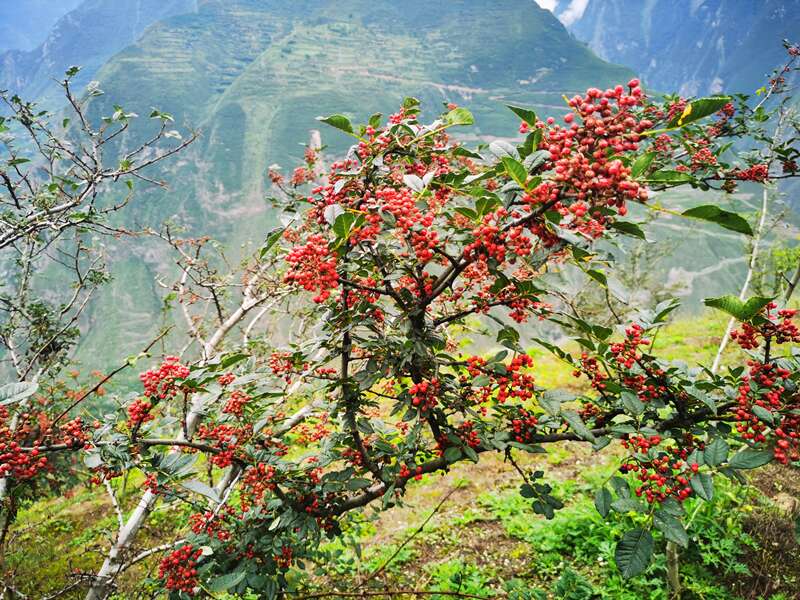
Zanthoxylum bungeanum is native to China, native to the Himalayas, and later transplanted to the second step of Chinese geography along the rivers. The distribution in China starts from the southeast of the northeast, to the north slope of Wuling in the south, to the coastal areas of Jiangsu and Zhejiang in the southeast, and to the southeastern part of Tibet in the southwest; Taiwan, Hainan and Guangdong are not produced. Found in the plains to the mountains with higher altitudes, in Qinghai, found on the slopes of 2500 meters above sea level, and also planted. Drought-tolerant, hi sunshine, planted everywhere.
The wood of Sichuan prickly ash is a typical light yellow, and the color becomes slightly darker when exposed to the air. The difference between the heart and the sapwood is not obvious. The xylem structure is dense and uniform, and the longitudinal section has a silky luster. The wood has artistic value. Zanthoxylum bungeanum is used as a traditional Chinese medicine, which has the functions of warming the middle of the qi, dispelling the cold, relieving pain, and killing insects. Treatment of abdominal pain, vomiting, diarrhea, schistosomiasis, roundworm embolism. Also used as an epidermal anesthetic.
Types of sichuan peppercorns China
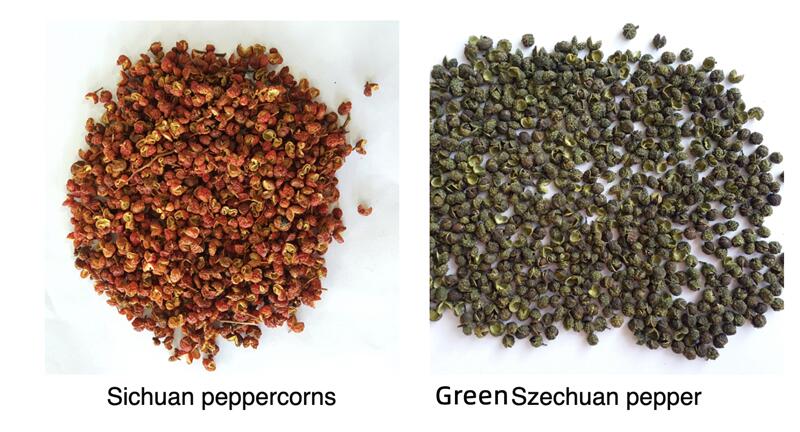
What are the types of peppers?
Generally speaking, there are mainly two kinds of Sichuan green pepper and Sichuan red pepper.
In different regions of China, there are also different names. Some are called Qinjiao, Fengjiao, Shujiao, etc., which are widely cultivated and have the highest economic value in my country, almost all over the country. Sichuan pepper has been cultivated in Gansu Province for more than 2,000 years. Jia Siwu, an outstanding agronomist in the Northern Wei Dynasty, recorded in "Qi Min Yaoshu": "Shu pepper comes out of Wudu, and Qin pepper comes out of Tianshui". The prickly ash is well-known both at home and abroad for its rich aroma, pure hemp taste and bright color. It was listed as a tribute as early as the Tang Dynasty. Ancient court aristocrats also used prickly ash to fragrant their mud houses, which is warm and fragrant, and also means more children and more blessings.
2. Wild pepper
It is one of the main types of pepper peels. It is used in the same way as Chinese prickly ash, but has a slightly worse taste. Mainly distributed in the south of the Yangtze River and in the mountain shrubs of North China, mostly wild, rarely cultivated. Branches with prickles and white lenticels. The leaflets are often 5 to 9, ovate-round or ovate-oblong, the stalk is very short and nearly sessile, and the edge is bluntly toothed. The flowering period is March to May, and the fruiting period is June to August.
3. Sichuan and Shaanxi pepper
Also called Dajinhuajiao. This species can be used as the rootstock of Chinese prickly ash, the peel can extract aromatic oil, and the seeds can also be used for oil extraction. Distributed in Gansu, southern Shaanxi and northern Sichuan. Branches with prickles, prickles straight, base enlarged. The leaflets are often 11 to 17, obovate or obliquely ovate, asymmetric on both sides, and the upper half edge has fine blunt teeth. Inflorescences axillary or terminal. The surface of the follicle is protruding with glandular points, purple-red when mature. The flowering period is April to May, and the fruiting period is June to August.
4. Bamboo leaf pepper
Referred to as bamboo leaf pepper. The purpose is the same as that of Sichuan peppercorns, but the peel is more numb and less fragrant. Mainly distributed in Southwest China, East China, Central China and North China, there is a small amount of cultivation in mountainous areas, or as rootstock of Chinese prickly ash. Evergreen or semi-evergreen, branches with prickles with flat bases and slightly curved tips. Leaflets 3-9, lanceolate to ovate-oblong, margin sparsely toothed or nearly entire. Inflorescences axillary. The fruit is small, with obvious verrucous spots on the surface, red to purple when mature, flowering from April to June, and fruit from July to September.
5, Green pepper
Also known as cliff pepper, wild pepper, chili pepper, green pepper for short. Use with pepper. Distributed in most provinces (autonomous regions) in the north and south of the Yellow River. Branches with needle-like prickles. Leaflets 11 to 21, lanceolate or oval-lanceolate. Inflorescences broad and terminal. The apex of the fruit has a short beak tip, and the surface glands are not very protruding. When mature, it is gray-green to brown-green, rarely purple-red. The flowering period is June to August, and the fruit period is September to November.
Sichuan red pepper mainly has the following varieties
1. Dahongpao
Dahongpao pepper is the most planted variety, especially Hancheng Dahongpao pepper is the best, with bright red color, strong and lasting aroma, moderate numbness, concentrated and long-lasting pungent and numbness, and relatively high yield.
2. Qin An No. 1
Qin'an No. 1 is a short-branched new prickly ash variety, and a new variant of the Dahongpao prickly ash series. It has the characteristics of early maturity, high yield, high quality and stability, and a wide range of trials.
3. Big red pepper
Dahongpao is also known as oil pepper, Erhongpao, Erzhizi, etc. Dahongpao Sichuan pepper fruit matures around mid-September. The surface of the fruit is bright red when ripe, and has a bright luster, with obvious perturbation glands on the surface. After drying, the peel is sauce-red, with thick peel, rich hemp flavor and excellent quality.
4. Small red pepper
Xiaohongpao is also called Xiaohongpao Sichuan pepper, rice pepper, Xiaojiaozi, horsetail pepper, etc. The fruit matures in early and mid-August. After drying, the peel is bright red and has a strong hemp fragrance, especially the fragrance is strong and the quality is excellent.
5. White pepper
Baisha pepper is also called Baili Sichuan pepper, Baishadan. The fruit matures in the middle and late August. After drying, the dried pepper skin is brown-red, with a strong hemp flavor, but the color is poor. White sand pepper is a medium-maturing species with strong high yield and stable yield, but the skin color is poor, the market sales are not very good, and it is not suitable for large-scale cultivation.
6. Bean pepper
Bean pepper, also known as white pepper, matures from late September to mid-October. The fruit is light red when ripe, dark red after drying, and the quality of the pepper skin is medium. It is cultivated in Gansu, Shanxi, Shaanxi and other provinces in the Yellow River Basin.
Main varieties of green pepper
Nine Leaf Green
Jiuyeqing prickly ash is the most competitive early-maturing variety. It has the characteristics of fragrant fruit and pure hemp taste. It is drought-resistant and can be planted in mountains, hills, river beaches, houses and other places.
What are the advantages and disadvantages of eating Sichuan peppercorns?
920069.jpg)
The benefits of eating Sichuan peppercorns:
Increase appetite. Sichuan pepper has a fragrant smell, which can remove the stench of various meats, promote saliva secretion, and increase appetite.
Disinfection. Sichuan pepper has the functions of sterilization, disinfection, pain relief, antipruritic, and swelling reduction. It has a good inhibitory effect on a variety of bacteria, especially the bacteria on the skin surface.
Toothache. Take some Sichuan peppercorns, fry the peppercorns with vinegar, and rinse them.
hypotensive. Studies have found that pepper can dilate blood vessels, which can lower blood pressure.
Disadvantages of eating Sichuan peppercorns:
Eating too much pepper may cause fire.
Sichuan peppercorns are condiments, warm in nature, and will increase the heat in the body after eating, and Sichuan peppercorns are generally used at the same time as peppers, and their heat is stronger. Dry tongue, mouth ulcers and other symptoms of getting angry.
In essence, Chinese prickly ash is actually a kind of hair, so if you eat more, it is very likely to lead to fire, and after fire, there will usually be inflammation.
In addition, because prickly ash also contains a certain amount of safrole, and eating too much of this substance is easy to cause liver lesions. Although eating Chinese prickly ash regularly is beneficial to the human body, for the sake of health, we still need to control the amount of Chinese prickly ash.
Eating too much Sichuan peppercorns may cause miscarriage
This is aimed at pregnant women. Zanthoxylum bungeanum contains camphor, which is toxic. After pregnant women eat it, the toxin can directly pass through the placenta and affect the fetus, causing fetal poisoning; and Zanthoxylum bungeanum also has a strong slippery effect. directly cause miscarriage. Therefore, it is best for pregnant women not to eat peppercorns during pregnancy.
The efficacy and role of Sichuan peppercorns
1. Increase appetite.
Zanthoxylum bungeanum has a fragrant smell, which can remove the stench of various meats, promote saliva secretion, and increase appetite.
2. Sterilization and disinfection.
Zanthoxylum bungeanum has the functions of sterilization, disinfection, pain relief, itching and swelling reduction, and has a good inhibitory effect on a variety of bacteria, especially the bacteria on the skin surface.
3. Treat toothache.
Take some peppercorns, fry them with vinegar, and rinse.
4. Lower blood pressure.
Studies have found that pepper can dilate blood vessels, which can lower blood pressure.
How to choose high-quality sichuan peppercorns?
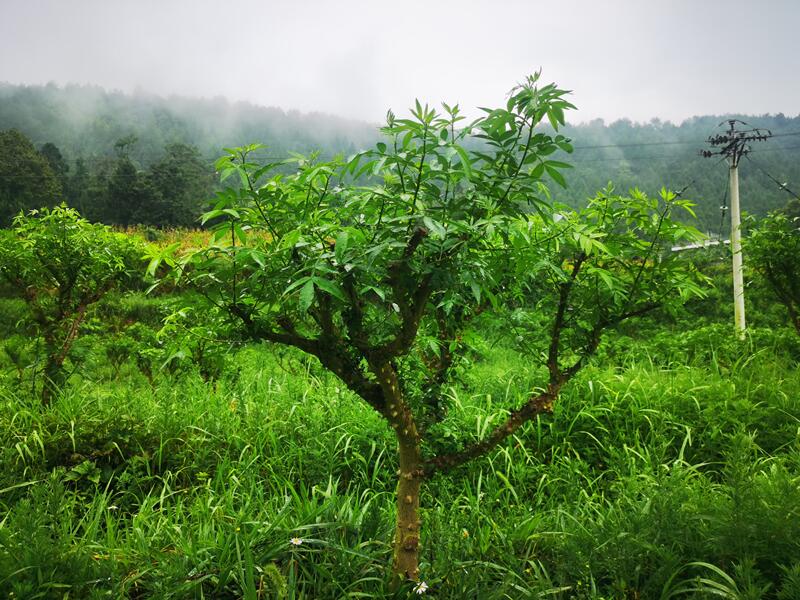
1. To see
It mainly depends on the color of Sichuan peppercorns, the size of peppercorns, the number of openings, and the presence or absence of impurities.
2. Pinch
Hold the pepper in your hand and pinch it, you can feel whether the Sichuan pepper is dry. If the pepper is dry, it will make a rustling sound. After pinching, put the peppercorns back and observe the palm of your hand, so that you can check whether there are many impurities in the peppercorns.
3. Smell
You can smell the smell of Chinese prickly ash. If the prickly ash is of good quality, there will be a natural fragrance. If the prickly ash is of poor quality, it will smell musty or other peculiar smells.
How to use sichuan peppercorns ?
In most cases, we use a mixture of Sichuan green peppercorns and red peppercorns, that is, a 1:1 mix. Take the hemp of green peppercorns, the fragrant and hemp of red peppercorns.
For boiled dishes, Sichuan peppercorns are usually put in the pot with peppers, stir fragrant and then add other sauces, and then add water to boil! Boil out the numbness of peppercorns with water! Then, when frying the oil, fry the aroma of the peppercorns at high oil temperature.
Fried pepper oil. Fry the prickly ash with peanut oil to make it slightly yellow and pick it out.
You can make chili sauce. Wash the peppercorns, chop the green onion leaves into pieces, add a little sesame oil, soy sauce and ground peppercorns to a piece and stir to make sesame pepper juice, which is used to pour on cooked meat. Salty and very tasty.
Make pepper water. Wrap the pepper in gauze, add water and boil it, that is, pepper water, which can be used to adjust meat stuffing, mix shredded pork and season it during cooking.
Use Sichuan pepper to make vinegar; use Sichuan pepper to make wine; use Sichuan pepper as medicine; use Sichuan pepper to make salt and pepper seasoning, which is used in barbecue.
How to grow Sichuan peppercorns?
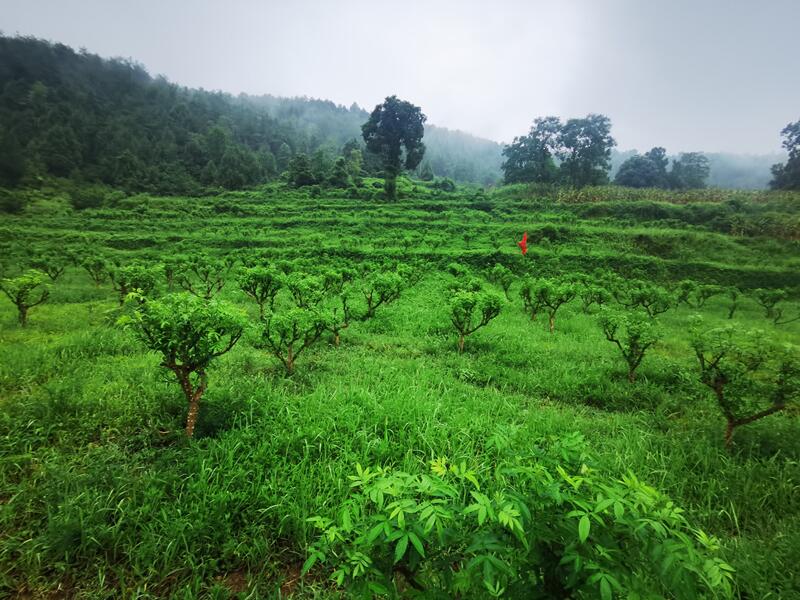
1. Selection of Sichuan pepper planting sites
The prickly ash forest land should be selected on the sunny or semi-sunny slope at the lower part of the hillside, and try to choose an open area with a gentle slope, a large slope, and a leeward facing sun. Zanthoxylum bungeanum has strong adaptability to soil and is suitable for deep loose, well-drained sandy loam and calcareous mountains; it is not suitable for planting on the top of hills or low-lying places prone to waterlogging and heavy clay soils.
2. Selection of Sichuan pepper varieties
Zanthoxylum bungeanum has a long history of cultivation in my country, and its variation is complex. The main representative cultivars in production are Hongpao, Dahuajiao, Xiaohongpao, Doujiao and so on. Dahongpao (Lion at the head) has a large crown, 35m high, strong vigor, small branch angle, large and sparse thorns, green-red shoots, 5-11 leaflets, large leaves, oval, no The hair is smooth, thick and shiny. The fruit matures in July and September, the fruit is large, bright red, and red after drying. 4-5kg of fresh fruit can be sun-dried to make 1kg of dried pepper peel.
3, Sichuan pepper tree planting technology
Nurturing and picking seeds: There are many varieties of prickly ash trees. When picking seeds, 10-year-old frame plants with strong growth, early results, high yield and good quality should be selected as the mother trees for seed picking. Loss of germination.
Planting of pepper seedlings
Planting density varies with cultivation methods, site conditions, cultivars and management levels. In arid areas, the site conditions are poor and the soil layer is thin. In order to form a forest at one time, the planting density can be 3×4m, 2×4m, 2×3m, and the number of plants per mu is 74, 83 and 111 respectively. The site conditions are good, the soil layer is deep or intercropping, the planting density can be 4×5m or 3×4m, and the number of plants per mu is 33 and 55 respectively. Narrow terraces in the mountains should be controlled flexibly. Generally, the terraces are planted in 1 row. When the terraces are larger than 4m, they can be planted in 2 rows. The plant spacing is 4-5m, and the row spacing depends on the width of the ground.
4, Sichuan pepper tree management technology
1. Soil management Soil is the basis for the survival of Sichuan prickly ash. Only good soil conditions can make the prickly ash root system develop and the branches and leaves flourish. Good soil management is the premise of high and stable yield of prickly ash. Zanthoxylum bungeanum is a shallow-rooted tree species, and the root system is concentrated in the depth of 60cm in the crown of the tree, so there is a farmer's saying that "Zanthoxylum bungeanum does not weed, it will age in the same year". Therefore, the weeds in the area of the prickly ash tree plate need to be weeded and cultivated 2-3 times.
2. Fertilization management Fertilization can be divided into three methods: base fertilizer, top dressing and foliar spray.
3. Irrigation and drainage: Water thoroughly every year before germination, flowering, autumn fertilization and freezing.
4. Management of flowers and fruits. Generally, Chinese prickly ash will germinate in the second sentence in March, show buds in the middle sentence in April, bloom in the last sentence in May, and begin to tune in the middle sentence.
5. Plastic pruning Plastic pruning is a very important technical measure in the cultivation and management of Chinese prickly ash.
5. Pest control
There are many diseases and insect pests of Sichuan prickly ash, and it is necessary to carry out targeted prevention and control, and adhere to the principle of prevention first, comprehensive control and pollution-free control. According to the survey, Sichuan prickly ash is in the control of chemical leaf disease, magnetic accumulation rot, Huayi tiger longhorn, flower pole aphid and flower standard stem peak.
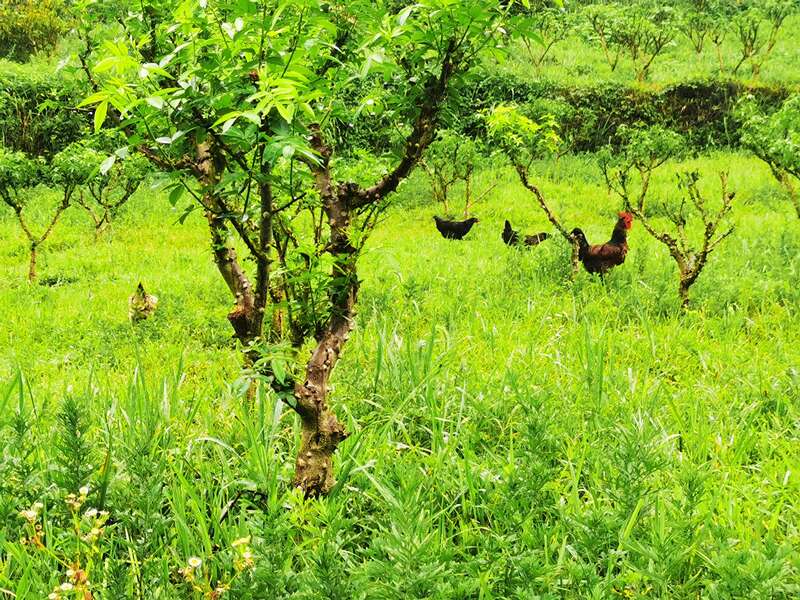
6. Harvesting and making
Qiangjiao When picking prickly ash, due to the variety, climate, year, and location, the city is unusually between the "office" and "white dew". That is August and September. After the fruit enters the skin ripening stage, the color changes from green and white to bright red, and the leaves are shiny and shiny, indicating that the fruit is fully mature, which is the best time for harvesting. The drying yard is preferably a cement floor. If the conditions are not available, it can be covered with a rain cloth and then spread out to dry on an unobstructed site. After drying, the peel is cracked from the suture, and only the small fruit stalks are connected. At this time, a thin wooden stick can be used to tap lightly to make the seeds and peel high, and then the peel and seeds are separated with a dustpan or a sieve, and then packaged separately. , store in a cool and ventilated place
How to pick Sichuan peppercorns?
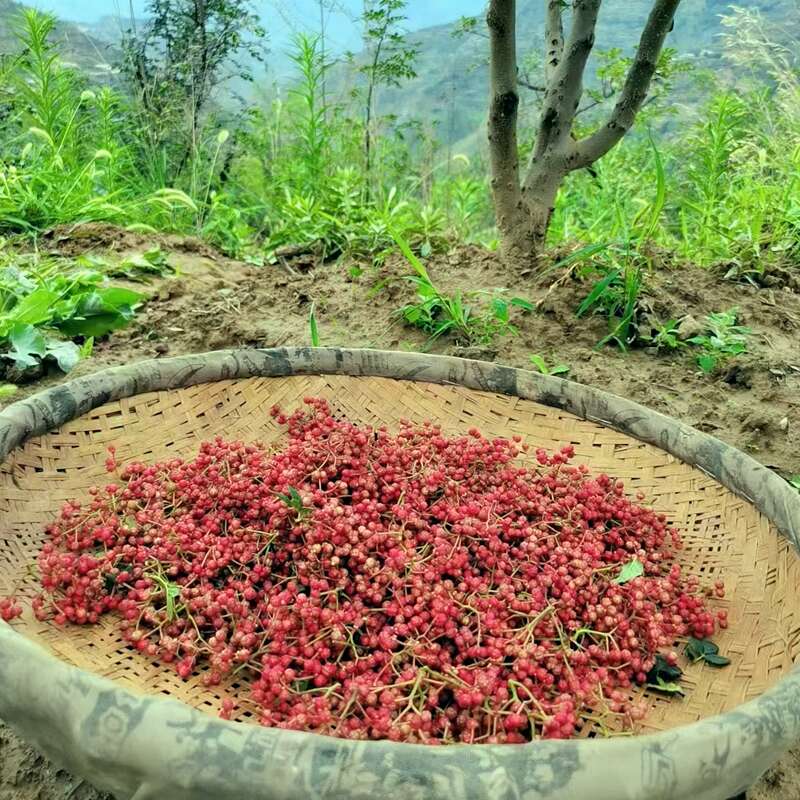
1. When picking prickly ash, you must prepare the prickly ash finger cover in advance. In order to avoid hurting your hands, this can ensure rapid picking of prickly ash. When picking, hold the entire branch with one hand, and one hand from the base of the branch. Pinch off the prickly ash. When picking, try to ensure that the entire prickly ash ear is intact. Use sharp scissors to quickly cut off the stalk of the prickly ash, and then remove the prickly ash. During the picking process, do not pick the peppercorns with your hands.
2. Generally, pick a sunny day without dew in the morning, so that the picking can catch up with the sun in time. When picking, carry a basket. When cutting, cut the whole ear one by one. Do not pick one grain at a time. This will affect the quality. When picking, don’t pick too many ears. Be careful to handle it with care to prevent squeezing. Smash oil cells.
3. Do not cut the general axis of the prickly ash when cutting the flower ear, it will cause the prickly ash to fail to grow. Generally, you only need to cut off the small spikes of the growing pepper. The leaves continue to supply nutrients to the tree to ensure the tree vigor, which is beneficial to the wintering of the prickly ash tree. When pruning, the fruit ears and some branches that have been damaged by pests and diseases can be cut off together and brought out for burning.
How to store Sichuan peppercorns?
1. Wash the fresh Sichuan green peppercorns or red peppercorns with water, and then place the green peppercorns in a ventilated place to dry in the shade. Then prepare cold boiled water and several small plastic bags. After the green peppercorns are dried in the shade, put them into small plastic bags respectively, then pour an appropriate amount of cold boiled water into each plastic bag and seal the plastic bag mouth.
2. Put the plastic bag containing Chinese prickly ash into the refrigerator for freezing, and take out the plastic bag to thaw when using. The fresh prickly ash preserved in this way will not change color even after 1 year.
3. Remove the leaves and stems on the fresh pepper, then rinse it with clean water to remove the dust and impurities on the surface of the pepper. Drain the washed green peppercorns, then heat an appropriate amount of hot oil in a pot. When the temperature of the oil reaches a certain level, pour it over the peppercorns in stages until all the oil is poured onto the peppercorns.
4. After the hot oil is poured, cover the lid while it is still hot, in order to extract the fragrant components in the peppercorns again. After a period of time, remove the peppercorns and return them to the pot to remove the moisture. Store in an airtight seal.
5. After the Sichuan red pepper is picked, it is dried on the ground. Generally, PP bags or PE bags are used for sealed storage. Store in a cool place so that it can be stored for a long time without spoiling.
275.jpg)

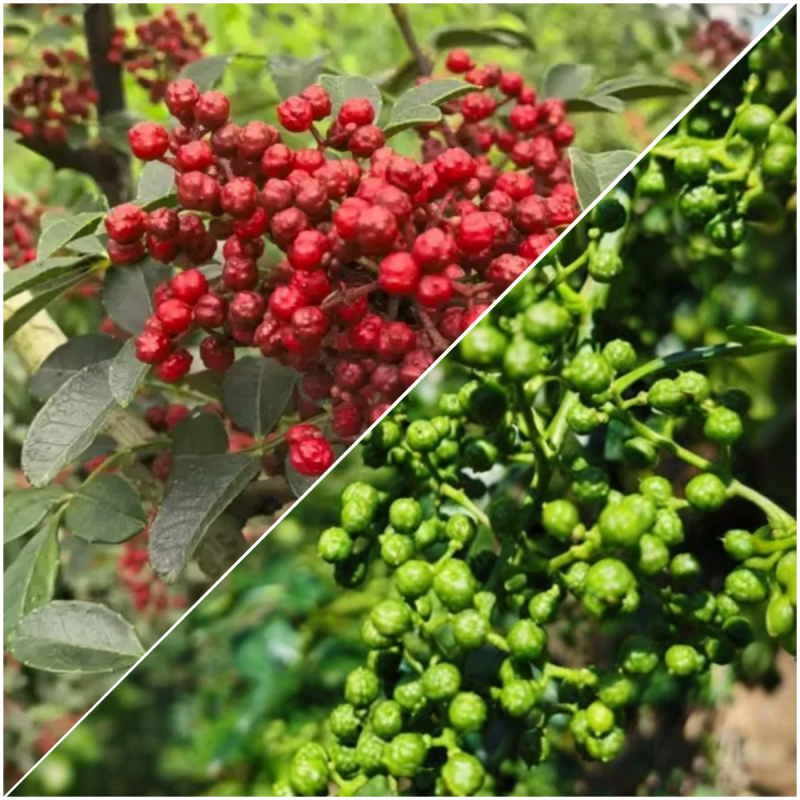
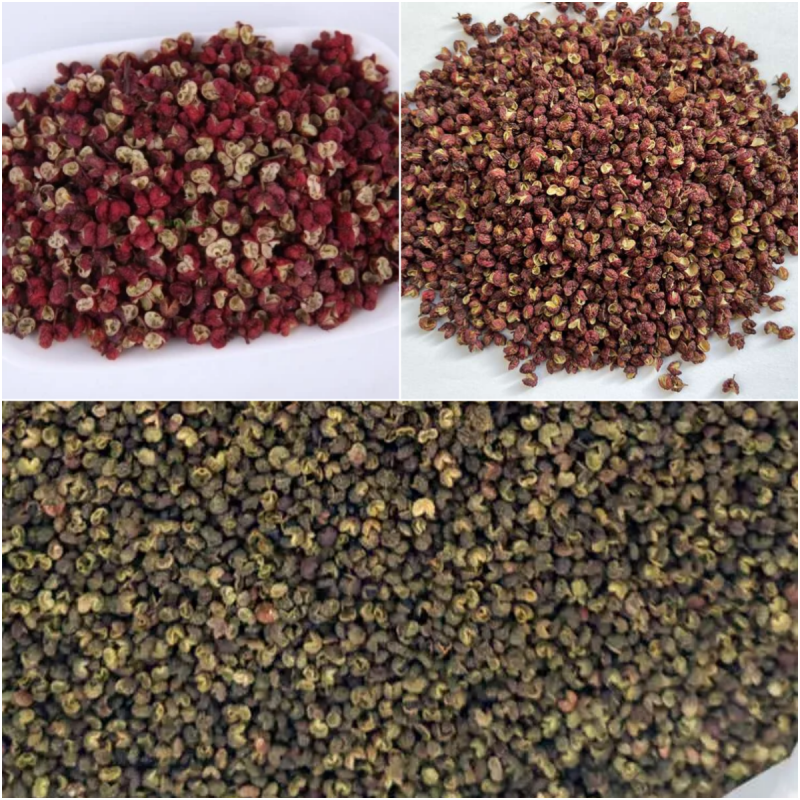
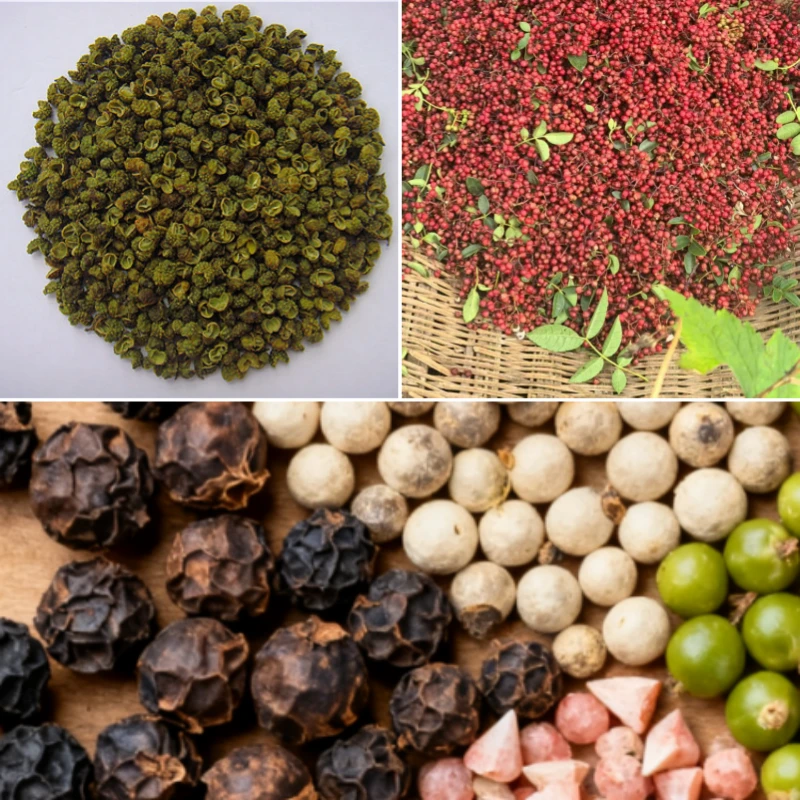
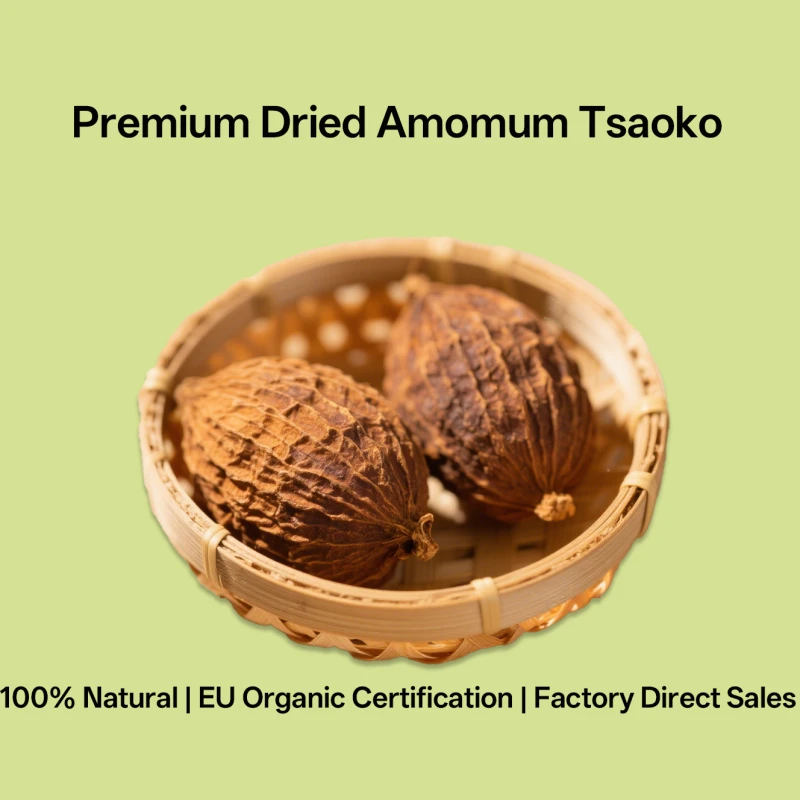
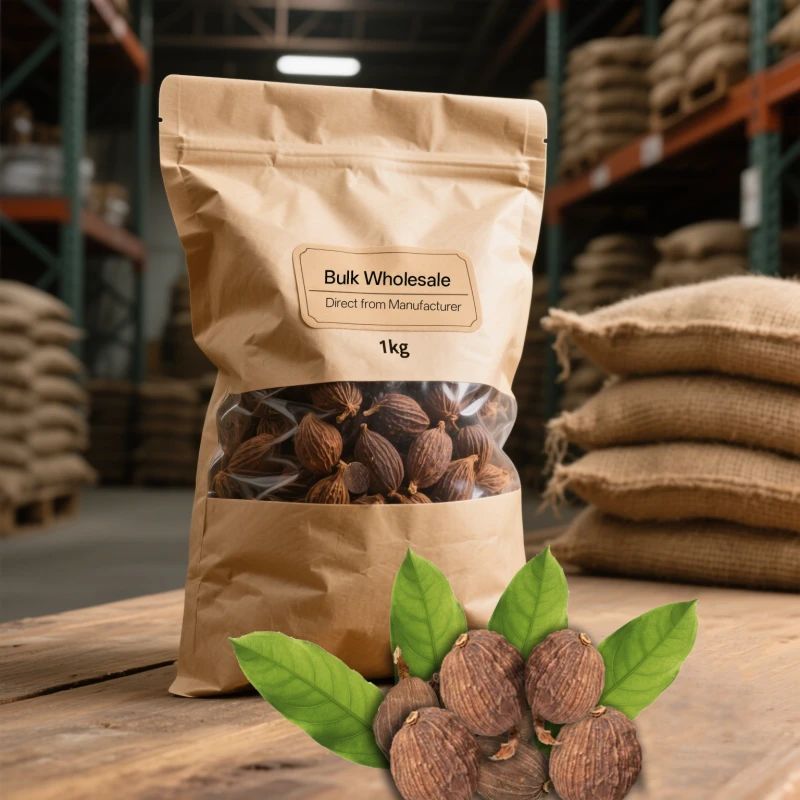
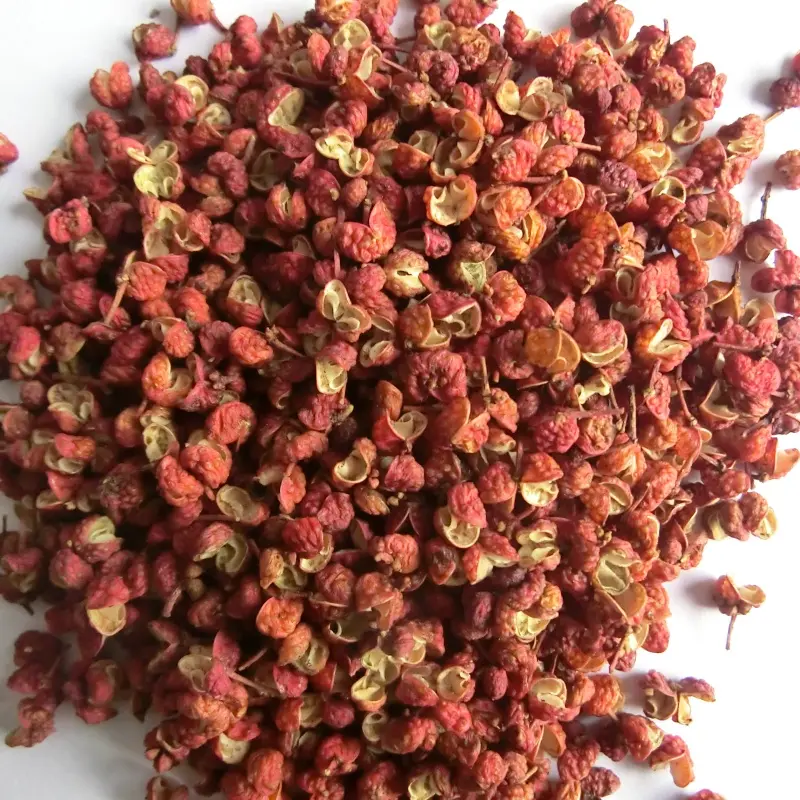
811.webp)
